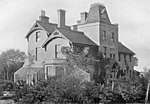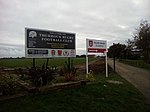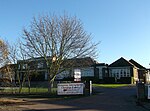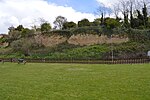Little Thurrock
EngvarB from September 2013Former civil parishes in EssexPopulated places in EssexPopulated places on the River ThamesThurrock

Little Thurrock (pronunciation ) is an area, ward, former civil parish and Church of England parish in the town of Grays, in the unitary authority of Thurrock, Essex. In 1931 the parish had a population of 4428.
Excerpt from the Wikipedia article Little Thurrock (License: CC BY-SA 3.0, Authors, Images).Little Thurrock
Premier Avenue, Thurrock
Geographical coordinates (GPS) Address Nearby Places Show on map
Geographical coordinates (GPS)
| Latitude | Longitude |
|---|---|
| N 51.491098 ° | E 0.339296 ° |
Address
Premier Avenue
Premier Avenue
RM16 2SD Thurrock
England, United Kingdom
Open on Google Maps









